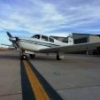High CHT's on Takeoff
-
Members Online
- navysix
- AH-1 Cobra Pilot
- ReboTim
- exM20K
- Brian E.
- JeffPug
- dzeleski
- Jetpilot86
- Planegary
- IvanP
- Paradigm
- pilot7205g
- Glen S.
- Scott Ashton
- skydvrboy
- khedrei
- 802flyer
- ericrynehess
- JoeM
- C.J.
- Austintatious
- eman1200
- larryb
- Woodpile
- jeff s
- toto
- Ron McBride
- jetdriven
- Phil EF
- Matthew P
- Lax291
- richardbrochu27
- hammdo
- ArtVandelay
- kaba
- N201MKTurbo
- Dialed In
- cferr59
- AndreiC
- Skates97
- Becca
- W0VOS
- Shadrach
- Fritz1
- Mooney in Oz
- Rmfriday
- atpdave
- cbogie
- mhrivnak
- r0ckst4r
- thomas1142
- Marc_B
- Bonanza flyer
- Grant_Waite
- Wrench978
- 47U
- Martens


Recommended Posts
Join the conversation
You can post now and register later. If you have an account, sign in now to post with your account.